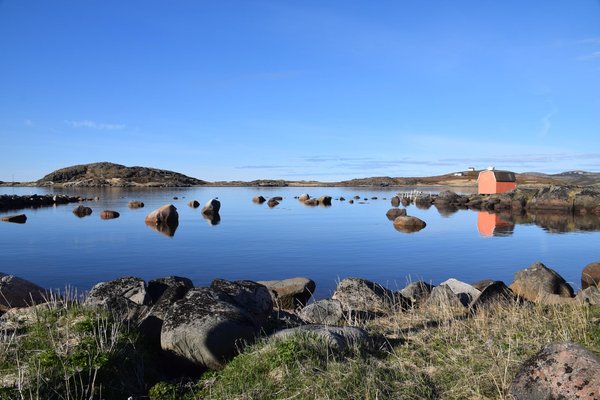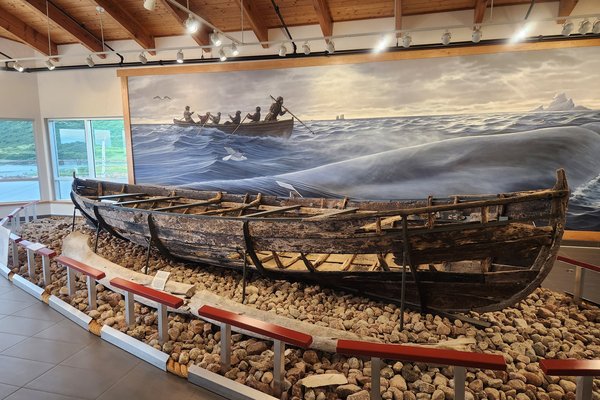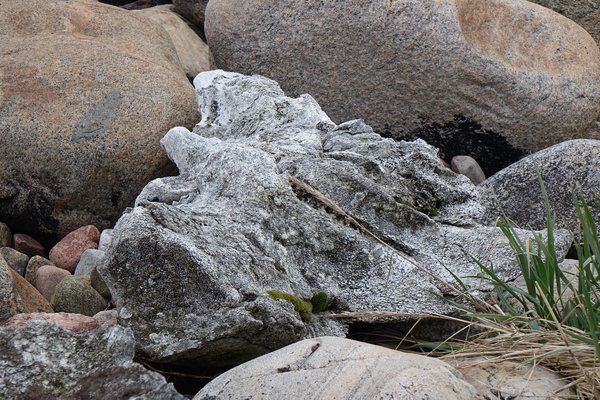Canada
Red Bay Basque Whaling Station
Red Bay Basque Whaling Station comprises the archaeological remains of the largest pre-industrial whaling site in north-eastern Canada.
The station was founded in the 1530s by Basque sailors, who made an annual transatlantic voyage to the site for summer whale hunting. They processed the whales in situ and took the oil home to Europe. The remains are mostly underwater or covered up. They include traces of buildings (including ovens for melting the whale blubber), whalebone deposits and shipwrecks.
Community Perspective: even when whaling is not your thing, you’ll enjoy the beautiful surroundings of this site. Take the boat out to Saddle Island (closed during the bird nesting season). Red Bay lies far from anywhere, but it is a relatively easy add-on to a trip to Newfoundland by ferry (see Randi’s review for the ‘difficult’ approach by gravel road).
Site Info
Official Information
- Full Name
- Red Bay Basque Whaling Station (ID: 1412)
- Country
- Canada
- Status
-
Inscribed 2013
Site history
History of Red Bay Basque Whaling Station
- 2013: Inscribed
- Inscribed
- Type
- Cultural
- Criteria
- iii
- iv
Links
- UNESCO
- whc.unesco.org
- Official
-
- pc.gc.ca — Red Bay National Historic Site
- Related
-
- heritage.nf.ca — Basque Whaling in Red Bay, Labrador
- thecanadianencyclopedia.ca — The Canadian Encyclopedia
All Links
UNESCO.org
- whc.unesco.org — whc.unesco.org/
Official Website
- pc.gc.ca — Red Bay National Historic Site
Related Resources
- heritage.nf.ca — Basque Whaling in Red Bay, Labrador
- thecanadianencyclopedia.ca — The Canadian Encyclopedia
News Article
- June 7, 2018 thetelegram.com — Upgrades at Red Bay National Historic Site to start this month
Community Information
- Community Category
- Secular structure: Factories and industry
Travel Information
Recent Connections
-
Perfect Inscriptions
2013 -
Shipwrecks
"Remains of shipwrecks from the 16th ce… -
Archaeological Site Reburial
"The archaeological features of the Red…
Connections of Red Bay Basque Whaling Station
- Geography
-
-
Basque
Red Bay was a summer post for Basque whalers in the 16th century
-
Atlantic Ocean
-
Straits
on the shore of the Strait of Belle Isle (which separates the Labrador Peninsula from the island of Newfoundland)
-
- Trivia
-
-
Cultural sites taking up an entire island
Among several completely inscribed islands is Saddle Island which contains the "Try-works" (furnaces for rendering whale oil from blubber) of the whaling station and other cultural remains.
-
- Ecology
- World Heritage Process
-
-
Perfect Inscriptions
2013
-
- Human Activity
-
-
Boats
San Juan is among many other sunken ships that have been recovered -
Sea Ports
-
Shipwrecks
"Remains of shipwrecks from the 16th century have been found in the bay: three at a depth of around 25-30 metres and one at 72 metres. Their state of preservation is good, and they are perfectly identifiable, such as the San Juan, built in 1565." (AB ev) -
Language isolate
Basque - A whaling station operated by Basque sailors. Basque was spoken in Newfoundland until the 18th century.
-
- Constructions
-
-
Lighthouses
On Saddle Island -
Cemeteries
The site of a 16th century Basque cemetery still exists at the tip of Saddle Island, with tombs hollowed out of the rock. (AB ev) -
Protective Shelters
The excavation sites have been reburied for protection, or are underwater, covered by tarpaulins. Few elements are immediately visible to the inexpert visitor. (AB ev)
-
- Timeline
-
-
Built in the 16th century
'Grand Bay' (or 'la Gran Baya'), today known as Red Bay, became an important Basque whaling centre from the 1530s onwards (AB ev)
-
- Science and Technology
-
-
Recently discovered
The first discoveries on the role of Red Bay as a 16th century whaling station date from the 1970s. (AB ev) -
Underwater Archaeology
the most comprehensive and earliest terrestrial and underwater archaeological testimony of European Transatlantic whaling (AB ev)
-
- Visiting conditions
-
-
Archaeological Site Reburial
"The archaeological features of the Red Bay Basque Whaling Stations are located both underground and underwater within the boundaries of the property. They have been reburied and stabilized as part of ongoing conservation measures.........All of the more than 3,000 original components of the vessel were systematically reburied on the Harbour bottom." (Nom File).
-
News
- thetelegram.com 06/07/2018
- Upgrades at Red Bay National Histo…
Recent Visitors
Visitors of Red Bay Basque Whaling Station
- Adam Hancock
- Ana Lozano
- Antonio J.
- Argo
- Atila Ege
- Birgitte Sørensen
- Brett Baumann
- Casey
- CynthiaW
- David Aaronson
- Els Slots
- Feldhase
- Frédéric M
- Gary Arndt
- George Gdanski
- Iain Jackson
- Jacob Choi
- Jawnbeary
- Jeanne OGrady
- J_neveryes
- Jonas Kremer
- KarenBMoore
- KeithBailey
- Lara Adler
- Lithobates
- Ludvan
- Michael Ayers
- Michael Novins
- Mihai Dascalu
- Nihal Ege
- Nolan B.
- Piotr Wasil
- Randi Thomsen
- Roger Ourset
- Roman Bruehwiler
- Rosemary
- Slavi
- Svein Elias
- Szucs Tamas
- Thomas Buechler
- Thomas van der Walt
- Tim Allen
- Tom Flaten
- Wojciech Fedoruk
- ZCTLife
- Zoë Sheng
Community Reviews
Show full reviews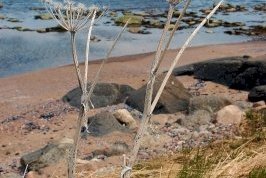
Ok, I will admit. I absolutely love Newfoundland and Labrador, which may have resulted in me giving this site at least a 1/2 star more than had it existed in a less beautiful province.
Red Bay is located in the Labrador part of the Newfoundland and Labrador, which is even less populated and more remote than the rest of this rugged province. Red Bay has a small but well put-together interpretation centre. The highlight of the centre is a 16th century Basque chalupa (small boat), which was discovered in the waters of Red Bay and painstakingly restored.
From the village, you can get on a boat to visit the small islands in the bay, such as Saddle Island, which is within the UNESCO boundary. From anywhere in Red Bay, you can see the wreck of the ship Bernier. Parks Canada also offers guided walks, and I have always found their walks to be very informative. You can get a very good sense of the place with a 2 hour visit.
On the way to Red Bay, in L'Anse Amour, you can take a quick stop to look at a 7,500 year old burial mound.
If you drive north away from Red Bay, you can visit Mary's Harbour. From there, you can take an once-a-day ferry to Battle Harbour, which is a restored ghost fishing village. Battle Harbour is not an UNESCO World Heritage site, but it would not shock me if it does become one in …
Keep reading 0 comments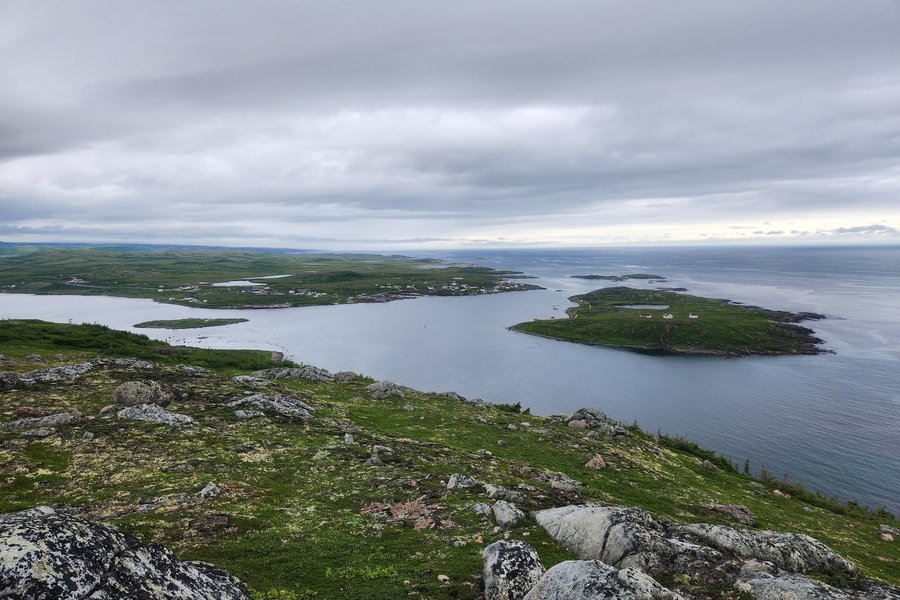
I visited Red Bay in July 2023 on a family camping trip to Newfoundland and Labrador. We began our visit at the interpretive center right on the waterside. The history of the Basques and their whaling in this area is well presented and documented. Many interesting artifacts are on display (including clothing, boat parts and crockery) and contribute to the exhibition. It's worth noting that most of the archaeological remains of Red Bay's economic activity are at the bottom of the bay, having been carefully returned there after discovery, inventory, and study.
A shuttle boat runs (now for free) every hour between the interpretation center and Saddle Island. A well-marked trail dotted with information panels circles the island. It's possible to visit it independently or with a Park Canada guide-interpreter. Since my mother doesn't understand English, we opted for the first option. It takes about an hour to walk the entire trail, taking the time to read all the signs and take photos, which allows you to return just in time to catch the next shuttle. It's nice to walk around the island and tread the ground where the Basques processed whale blubber, but there's very little evidence of this activity. We can only guess at the shape of ancient furnaces in the grass of the island. It's instructive, but not very impressive. A much more recent wreck catches the eye.
It should be noted that the most interesting archaeological piece preserved out of the water, a small chalupa over …
Keep reading 0 comments
I did not ‘engineer’ my 800th visited World Heritage Site: my Canadian itinerary was already set before I decided to go to Tunisia first. With no ‘misses’ in between, the Red Bay Basque Whaling Station became my #800. The place does not sound as exciting as Okavango and Uluru for example, which were my #700 and #400 respectively. But in the end, I was happy with it as I found it an enjoyable site in a rather remote location.
If you look up on a map where this is located, you will see how remote and isolated it is. Labrador's first "big" town - with the beautiful name Happy Valley Goose Bay - has only 8,000 inhabitants and is 550 km away. Fortunately, Labrador is part of the province of Newfoundland & Labrador, so the province subsidizes a ferry that runs daily between the tip of Newfoundland (near L'Anse aux Meadows) and Blanc Sablon (an hour south of Red Bay). Ideal for the WH traveller.
I was a bit concerned about this ferry beforehand: it gets very bad reviews, the company has a terrible website and you can only reserve by phone. On the spot, it turned out not to be too bad and both trips were right on time on a spacious ship. There was also a lot of freight traffic and a single tour bus on this 1.5-hour crossing.
The drive along the Labrador coast the next morning was beautiful. You see mountains, endless coniferous …
Keep reading 0 comments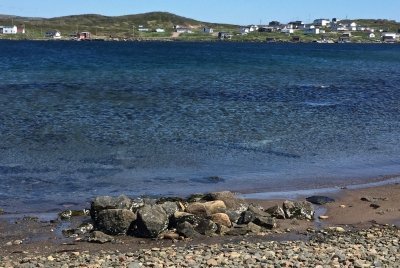
Visited 13JUL 2018
Getting to Labrador requires a very long drive (8-10 hours) from the east coast to the west. Another option would be a flight into Deer Lake, but check on whether any rental cars are available first as this was an issue for us as were the drop off charges that were exorbitant?
Enroute to the Ferry that goes to Red Bay, take the Viking Trail (route 430) which goes through gorgeous Gros Morne National Park, also UNESCO, which we planned to do on the way back.
Also, consider a brief halt at The Arches Provincial Park along the way. It features a very photogenic Rock formation!
Our GPS didn’t recognize tiny St. Barbe, the ferry town to Labrador, but just keep on the Viking trail and you will get there. Check out the ferry schedule carefully; we found that Friday had boats that allowed us to do a return day trip, unlike other days. The ferry is a pleasant two-hour trip. From the ferry dock in Blanc Sablon (actually in Quebec), it is a daunting one hour drive to Red Bay. The road is mostly potholes. A local quipped that we would wish it was a gravel road. In mid-July, we could see patches of snow near the highway. The weather was sunny but winds ranged from brisk to near gale force.
The charming town of Red Bay is situated on a sheltered sea, which made it ideal for whaling in days …
Keep reading 0 comments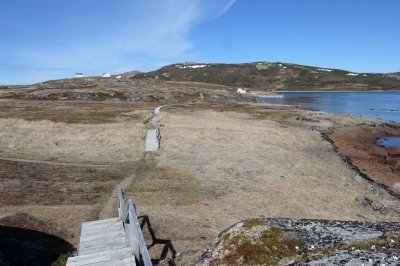
We visited this northern outpost in June 2018. This world heritage site is not the greatest, but our effort getting there, and the coastal surroundings made it one of the most memorable places on our Canada trip. We drove the inland route from Quebec along the St Lawrence Bay up to Baie Comeau and then route 389 some 590 km to Labrador. Further on the Trans Labrador Highway back to the eastern coast. It’s about 1600 km through desolate land, mostly paved but about 600 km is still gravel. At the most there are about 4oo km between settlements and gas. The isolated settlements or towns were fun to visit. We stayed overnight in Wabush close to Labrador city and in Happy Valley Goose Bay on the way.
We arrived in Red Bay with cloudy weather and 8-10 degrees. A reservation at Red Bay Whaling station turned out to be a cabin – a small strand house with view to Saddle island, within the core zone of the world heritage site. During dinner at the only restaurant in town, the whaling station, the weather cleared, and the view became just fantastic. It greatly reminds us of the nature and small communities of northern Norway, except for the icebergs passing by😊
The next morning the wonderful weather continued, blue sky, no wind, perfect for exploring the site. The morning views from our cabin to the Saddle island was amazing.
From the whaling station there is a boat service …
Keep reading 0 comments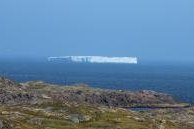
Red Bay Basque Whaling Station is a quite new World Heritage Site (2013), but definitely worth it's UNESCO-status. It is an amazing place to visit, both the history and the stunning surroundings make this a very nice experience.
The history of the Red Bay Basque Whaling Station is told at the Visitor Centre, which is informative and well-organized, but not very big. The main sight, Saddle Island, was closed on our visit due to birds nesting (mid-June). A boat will normally take you out to Saddle Island where one can stroll around and look at the remains of the whaling station, including the old cemetery.
The many shipwrecks in and around the bay are an important part of the UNESCO-status. At the Visitor Centre one can see one of the smaller basque vessels, the chalupa.
We were truly amazed by the beautiful surroundings of Red Bay, including the magnificent icebergs drifting past. We drove up from Blanc Sablon, where one can arrive by ferry from Newfoundland, and the hour-long drive was stunning. If you visit Newfoundland and the wonderful UNESCO-sights Gros Morne and L'Anse aux Meadows, be sure to take the detour to Labrador and Red Bay.
Keep reading 0 comments
